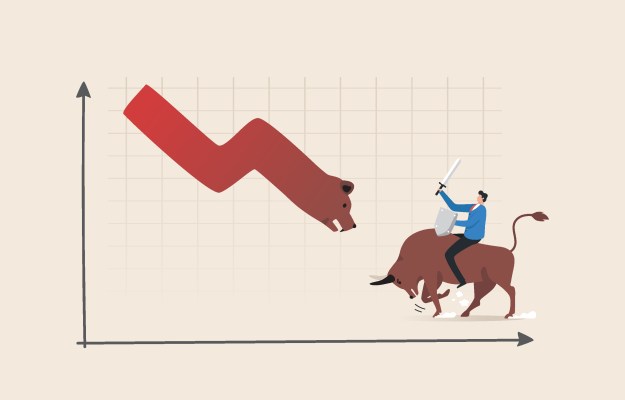Global venture funding has been rather gloomy as of late, with data from Crunchbase showing that investments fell in Q3 despite a late-stage rebound led by large AI deals.
And the story’s no different for SaaS startups.
In May, net new SaaS sales came down from a spike in Q1 while churn worsened, spurred by reduced business-to-business budgets and higher borrowing costs. At the same time, extension rounds — an important indicator of a sector’s overall health — declined.
PitchBook data compiled for TechCrunch shows that U.S. VC follow-on activity in SaaS dropped from a high of $9.7 billion across 270 deals in March to a low of $1.5 billion across 131 deals in October. The decrease in deal count has been consistent: Each month since June, the total number of SaaS follow-on deals has dipped by around 10 to 40 deals month-to-month.
The caveat is that total SaaS extension deal value has been holding steady at between $1.5 billion and $2.9 billion from April to October. But that simply indicates that a smaller cohort of startups has been securing disproportionately larger extension rounds.
The reasons for the drop-off, according to Derek Hernandez, senior emerging tech analyst at PitchBook, aren’t necessarily anything specific to SaaS but rather general economic challenges.
“The macroeconomic environment continues to weigh on SaaS,” he told TechCrunch+ via email. “We don’t anticipate a turnaround for the broader SaaS sector anytime soon. Certain categories have shown some resilience and signs of stabilizing but nothing definitive that would support expectations of a meaningful turnaround in the coming quarters.”
Mark Wesker, senior director analyst at Gartner, didn’t completely share Hernandez’s view, however. While he agreed that the slowdown in venture-funded extensions isn’t a SaaS-specific phenomenon, Wesker noted that exits for SaaS companies have been on the decline since last year.
The exit market for SaaS dried up in the second half of 2022, which saw the lowest exit activity since 2016. Meanwhile, venture investment was down 70% in Q4 2022 compared to Q4 2021.
“Exits declined precipitously between 2021 and 2022, where exit values declined from $1,445 billion to $316 billion,” Wesker said in an email. “This is an order of magnitude decline, which has a chilling impact on fundraising, but especially on follow-on rounds, as it signals potentially longer windows for companies to exit — many of which may already be trending toward seven-plus years since initial VC investment.”
When exits decline, more mature deals begin to look like they’ll take much longer to exit — which compromises VC firms’ ability to return investments to investors. Firms triage by weeding out “aged” investments that appear unlikely to exit and so don’t participate in follow-on rounds, Wesker said.
There’s another factor that’s depressing extensions for SaaS companies: valuations that VCs see as excessively high. Thanks to low interest rates, low inflation and the SaaS market’s meteoric historic growth, many investors gleefully adopted a “gold rush” mentality several years ago. But no longer. Tellingly, SaaS valuations declined 75% from October 2021 to October 2022.
“Those high valuation deals now appear too high to generate any meaningful ROI,” Wesker said. “High valuations coupled with exit declines [are] a perfect storm for companies needing follow-on rounds — exacerbated by macroeconomic factors that depressed growth, compromised cash flow runways and accelerated need for follow-on funding.”
Wesker sees light at the end of the tunnel, however.
The slowdown in SaaS extension rounds should abate, he said — barring any “new macroeconomic or geopolitical disruptions.” Wesker noted that following five consecutive declining quarters, bottoming out in Q1 2023, exits have trended upward in Q2 and Q3, perhaps signaling a meaningful return in investor confidence.
There’s light evidence of this.
In September, ANKA, an Ivorian SaaS e-commerce platform, raised $5 million in a pre-Series A extension round led by IFC. And the European market is looking promising, with a report from AlbionVC predicting that early-stage VC funds will deploy an estimated €2.8 billion (~$2.95 billion) in capital by the end of the year.
“As public markets return value to SaaS market capitalizations compromised during 2022 and early 2023 market declines, this provides those public SaaS companies with currency to make acquisitions — and hence exit opportunities for VC portfolios to begin to trend upward,” Wesker said. “Most VC firms have completed the portfolio triage process, directing follow-on investments to those deals where growth and valuation place them on an achievable exit trajectory.”
